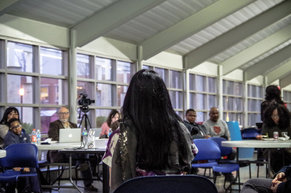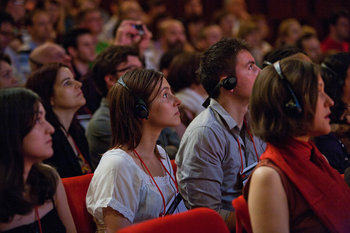
EthosInfluencing with authority or reference to an authority. | PathosAn appeal to emotion. |
LogosInfluencing with logical arguments. | Anticipating objectionsConsidering how people will react and planning to handle it. |
Asking for permissionAsking for permission to interject or to offer an opinion. | SignalingTrying to convey that you have social status or virtue. |
CountersignalingDownplaying yourself as a show of confidence. | ProvokingDesigning statements to provoke a vivid response. |
Devil's AdvocateDefending an unpopular opinion you don't really believe in order to encourage productive thought and debate. | ComposureNot allowing others to disrupt your personal presence and calm. |
EmpathyFeeling what others feel. | SympathyShowing that you care without directly sharing an emotion. |
CivilityThe process of politely resolving differences within the rules of a society and culture. | Creative tensionCreating disharmony and tension in order to resolve things or spark creativity. |
Call to actionDirectly requesting that the audience take a specific action. | NudgesSubtle suggestions that avoid being commanding. |
Active silenceThe purposeful use of silence in communication. | Active constructive respondingProviding encouraging feedback in a responsive and engaged way. |
Emotion labelingIdentifying emotions in a non-judgmental way e.g. "so you feel sad about it." | Active listeningDoing things to show that you're listening. |
Listening with intent to understandA more advanced technique than active listening that involves actually trying to fully understand someone including the emotions or strategies behind words. | Half-listeningScanning for something you need to know or respond to without really listening. Important where communication is mostly meaningless. |
PolitenessUsing formal language and following norms to show consideration and respect to others. | ComplimentsSaying nice things about people. |
False PraiseInsincere compliments. | Constructive criticismOffering criticism in a positive way that focuses on potential improvement. |
Cross-cultural communicationThe ability to communicate with people who don't share your exact cultural background and experiences. | Small talkTalking about minor topics simply to be social. |
Touching baseContacting someone with small talk in order to keep a social connection alive. | Message framingCarefully crafting a message for some intended effect. |
Choice architectureCarefully structuring choices for decision making. | Calibrated questioningAsking carefully crafted questions. |
Closed-ended questionA question that demands specific information. | Open-ended questionA question that allows for a creative answer from any direction. |
ReframingRepositioning or restating what you or someone else has said. | StorytellingTelling stories. |
HumorThe use of humor to have fun, increase engagement, build rapport and convey your personality. | Inside jokesHumor that references shared experiences. Used to build rapport. |
WitThe ability to say the perfect thing at the perfect time. | Cruel witThe use of wit in a fearsome or unkind way. |
Criticism avoidanceCommunicating with intent to avoid criticism. Often involves saying nothing specific, helpful or useful. | MirroringMatching the tone of others when communicating with them. |
Taking the high roadRefusing to allow others to drag you down to their level of behavior. | CandorVolunteering information that might be useful. |
Anecdotal evidencePresenting examples as proof. | SteelmanStrengthening someone's argument before countering it. |
Straw ManCountering an argument that your opponent did not make. | View from nowhereAn attempt at objectivity or fairness that is detached from reality. |
Moot pointOffering unhelpful information or questions. | AnalogyExplaining one thing using its similarities to another thing. |
LeadershipCommunicating to get people moving in the same direction. | Charm offensiveA communication campaign designed to increase good will. |
Charismatic authorityA feeling of authority that resonates from your personal presence. | Expectation settingClearly communicating your expectations of others. |
Managing expectationsDirectly communicating what you will and will not do. | Visual communicationCommunication with any visual means including images or body language. |
ArtPure creative expression in a visual form. | MusicA compelling type of artistic expression that influences thoughts, mood and emotion. |
MarketingUsing communication to sell. | Dumbing downOversimplifying things. |
Plain languageUsing the most general and direct words to express something. | ParaphrasingSumming up something. |
NuanceUsing exactly the right words often with many layers of complexity. | Civil inattentionIgnoring others to create social comfort. |
False dilemmaThe incorrect assertion that there are only limited choices in a particular situation. | Self-monitoringTrying to be aware of how you are perceived. |
Eye contactCommunicating with the eyes, surprisingly effective. | Body languageCommunicating with position, pose, gestures and movement. |
Social cuesSubtle communication that requires much social perception to grasp. | OvercommunicationDull communication with no point or repetitive communication. |
TaglineA short catchy statement that is memorable. | Rule of threeThe principle that lists of three things are usually most effective. |
Peak-end ruleThe theory that people mostly remember the start and end of a speech. | Rhetorical DeviceWell known ways to influence |
































